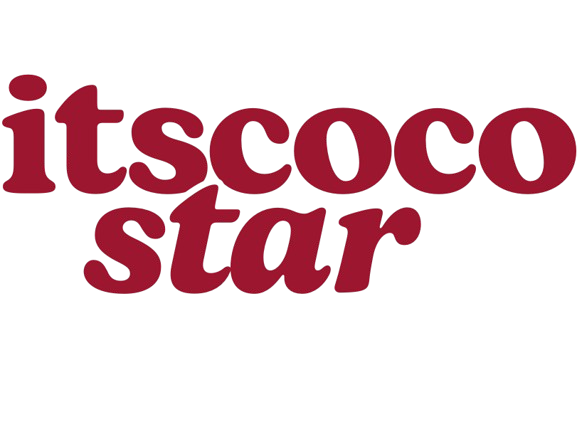The Importance of Culture Fit
One of the primary reasons certain businesses enjoy high success rates in hiring is their commitment to ensuring a cultural fit between candidates and the organization. Companies like Zappos, known for their exceptional customer service and company culture, emphasize hiring for cultural alignment. Zappos has famously stated that they would rather hire someone who fits their culture than someone with an impressive resume but a poor fit. This philosophy fosters a more cohesive work environment, reduces turnover, and ultimately boosts employee satisfaction.
Defining Culture
To successfully evaluate culture fit, companies must first define their organizational culture. This includes identifying core values, work styles, and team dynamics. For instance, if innovation is a key value, then candidates who demonstrate creativity and a willingness to take risks will likely thrive. When businesses clearly articulate their culture and values, they can better assess whether candidates align with these principles during the interview process.
Rigorous Interview Processes
Another hallmark of successful hiring practices is a rigorous and well-structured interview process. Companies like Google have developed comprehensive interview frameworks that focus not only on technical skills but also on problem-solving abilities, leadership qualities, and interpersonal skills. Their interview process includes multiple rounds with various team members, ensuring that the candidate is evaluated from multiple perspectives.
Behavioral Interviews
Behavioral interviewing is a technique that many successful companies use to gauge a candidate’s past performance as a predictor of future behavior. This method involves asking candidates to provide specific examples from their previous work experiences, allowing interviewers to assess how candidates have handled challenges, collaborated with teams, and contributed to company goals.
For instance, instead of simply asking if a candidate is a team player, interviewers might ask, “Can you describe a time when you had to work with a difficult team member? How did you handle the situation?” This approach not only uncovers valuable insights into a candidate’s character but also allows companies to determine how well a candidate’s experiences align with their needs.
Emphasizing Diversity and Inclusion
Businesses that prioritize diversity and inclusion tend to see more success in their hiring outcomes. Companies like Salesforce actively cultivate diverse teams, understanding that varied perspectives lead to more innovative solutions and improved problem-solving. When diverse voices are included in the hiring process, organizations can better reflect the customer base they serve, which enhances their relevance and adaptability in the marketplace.
Strategies for Inclusive Hiring
To foster an inclusive hiring environment, companies can implement several strategies:
- Blind Recruitment: Removing identifiable information from resumes can help minimize unconscious bias. This allows hiring managers to focus on qualifications rather than demographic factors.
- Diverse Interview Panels: Including a variety of voices on interview panels can lead to more balanced assessments of candidates. Diverse perspectives can help challenge biases and ensure that all candidates are evaluated fairly.
- Community Engagement: Partnering with organizations that focus on underrepresented groups can widen the talent pool. Engaging with local communities not only fosters goodwill but also enhances a company’s image as a responsible employer.
Employee Referrals
Many companies, including those featured in The New York Times, have harnessed the power of employee referrals as a key component of their hiring strategy. Employees are often the best ambassadors for their company culture, and they can provide insights into the qualities that will succeed within the organization.
Benefits of Employee Referrals
- Higher Retention Rates: Referrals typically lead to higher employee retention rates because referred candidates often have a clearer understanding of the company culture and expectations.
- Faster Hiring Processes: Employee referrals can streamline the hiring process. Candidates who come through referrals often require less vetting and may be onboarded more quickly.
- Cost-Effectiveness: Hiring through referrals can reduce recruitment costs. Rather than relying solely on external recruiters or job boards, companies can tap into their existing workforce to find suitable candidates.
Continuous Learning and Development
Companies that invest in their employees’ ongoing learning and development often see better hiring outcomes. When candidates know they will have opportunities for professional growth, they are more likely to view the organization as an attractive place to work.
Creating Development Programs
- Mentorship Initiatives: Establishing mentorship programs can provide new hires with guidance and support, helping them acclimate to the company culture and expectations.
- Training Opportunities: Offering workshops, seminars, and online courses allows employees to continuously develop their skills. This investment not only enhances employee satisfaction but also contributes to a more skilled workforce.
- Feedback Loops: Creating a culture of feedback helps employees grow and adapt. Regular performance reviews and check-ins can provide valuable insights into areas where employees may need additional training or support.
Utilizing Data Analytics
In an increasingly data-driven world, companies that leverage analytics in their hiring processes tend to achieve better results. Data can inform every stage of recruitment, from sourcing candidates to evaluating the success of hiring practices.
Metrics to Track
- Time-to-Hire: Monitoring how long it takes to fill positions can help identify bottlenecks in the hiring process.
- Candidate Quality: Tracking the performance of hired candidates over time can reveal the effectiveness of sourcing channels and interview techniques.
- Diversity Metrics: Assessing the diversity of the candidate pool and the final hires can help organizations gauge their success in creating an inclusive environment.
The Role of Technology
Technology plays a significant role in modern hiring practices. Many companies are using artificial intelligence and applicant tracking systems to streamline recruitment processes, ensuring they find the best candidates efficiently.
Tools for Success
- AI Screening Tools: These tools can quickly sift through resumes and identify candidates who meet specific criteria, allowing recruiters to focus on the most promising candidates.
- Video Interviews: Virtual interviews can save time and resources while allowing companies to connect with candidates from diverse geographic locations.
- Online Assessments: Skill assessments and personality tests can provide additional insights into a candidate’s capabilities and how they may fit within the team.
Conclusion
Successful hiring is both an art and a science. Companies that prioritize cultural fit, employ rigorous interview processes, emphasize diversity and inclusion, leverage employee referrals, invest in development, utilize data analytics, and embrace technology tend to see their hires work out more often. By learning from the practices of successful organizations highlighted in publications like The New York Times, businesses can refine their hiring strategies and ultimately build a more effective, engaged, and satisfied workforce.
In a world where talent is the new currency, organizations that focus on these principles will not only attract the right candidates but also foster an environment where both employees and the business can thrive.






